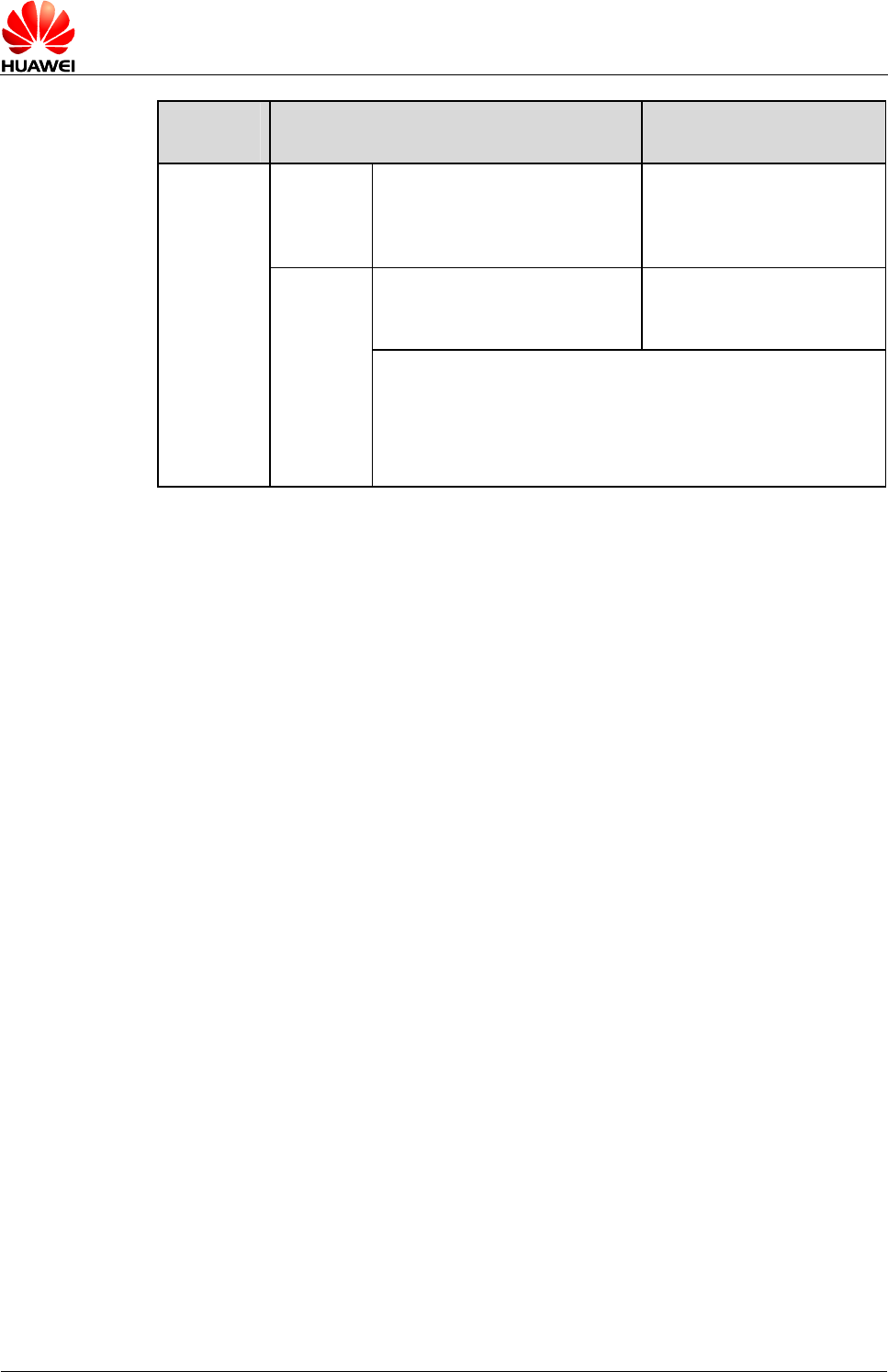
HUAWEI MG323 GSM M2M Module
AT Command Interface Specification Overall Description
Issue 02 (2010-11-23)
Huawei Proprietary and Confidential
Copyright © Huawei Technologies Co., Ltd.
6
Command
Type
Command Format Description
Read
command
<name>? A read command is
executed to read the
current value of a
parameter.
<name>=? A test command is
executed to check the
parameter range.
Test
command
Note:
If the MS fails to identify <name>, the MS returns ERROR. If the
MS can identify <name> and the contents returned by the
command do not contain parameters, the MS returns OK. If the
contents returned by the command contain parameters, the MS
returns the value range of each parameter, and then returns OK.
1.4.3 Abort Attributes of AT Commands
Abort means that the TE sends an instruction to abort a command when the
command is being executed. An abort instruction must be sent before a command is
completely executed. Therefore, the abort instruction is valid for a command whose
execution consumes certain time; however, not all commands of this kind can be
aborted. Whether a command can be aborted depends on the abort attribute of the
command. Each AT command has its abort attribute, which is alternative. That is, the
command is either abortive or not abortive. Abortive commands include certain basic
commands and execution commands of action commands. Within 125 ms after the
abortive commands are sent, no abort request is accepted. After 125 ms and before
the commands are completely executed, if the module receives any character sent by
the TE, the commands are aborted immediately.
Abortive commands are as follows:
z
ATD*99#
z
ATD*98#
z
AT+CLCK
z
AT+COPS commands (excluding AT+COPS=?)
z
AT^MONI
z
AT^MONP
z
AT^SMONG
1.4.4 Rules for Running AT Commands
1. Each command line contains only one AT command and ends with a carriage
return character. In principle, users are not allowed to run S3/S4 format
modification commands. This rule is applicable to the communication between
the MT and TE programs.
2. To increase the readability and regularity of command and response formats, in
addition to the original interfaces specified in standards and protocols, all new
interfaces must observe the following rule: No space is added to the end of


















